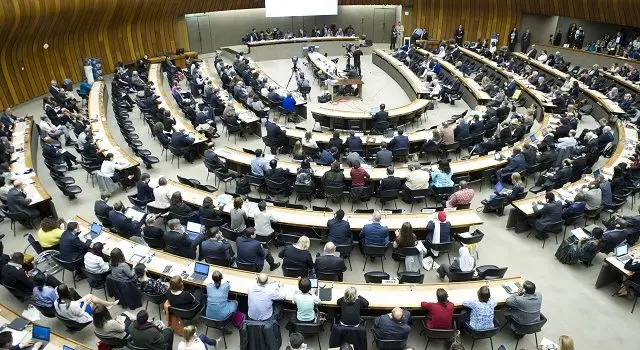Johanna Ralston is the Chief Executive Officer of the World Heart Federation and Vice Chair of the NCD (non-communicable disease) Alliance.
“The NCD Alliance was founded by the World Heart Federation, the Union for International Cancer Control and the International Diabetes Federation, in 2009. In 2010 we also invited The Union to join, to represent chronic respiratory disease.
“We came together because, in addition to common risk factors that all of our diseases share – these are common risk factors of tobacco use, unhealthy diet, physical inactivity and harmful use of alcohol – we also shared what we called the fifth risk factor, which was lack of political prioritization as a critical issue in low- and middle-income countries, which was manifesting as lack of funding and attention.
“These were all diseases that have become a huge epidemic in the developing world. 80% of the burden of NCDs occurs in low- and middle-income countries, and yet there were virtually no resources to address them. This is in part because the Millennium Development Goals, which were formed in 2000 and which had formed the basis for much global donor prioritization around health, left NCDs off the agenda.
“The issues that we’re talking about have gone beyond just the health sector. In fact, we cannot solve the NCD problem unless we go into other areas of development, including how people eat, how they live, how cities are developed, how agricultural policies are formed, and even in the realm of trade – how we deal with tobacco.
“Following extraordinary advocacy efforts across the cardiovascular disease (CVD) and NCD communities, last year we saw NCDs finally included in the Sustainable Development Goals (SDGs) 2016-2030. Having the Heads of State address Sustainable Development Goals, including NCDs, allows there to be the highest level of political prioritization a country can have, and also means that we go beyond health into addressing a group of diseases that has as much of its drivers outside of health as within it.
“At the World Heart Federation, we feel that the NCD agenda is very much a CVD agenda, because the goals of the World Health Organization, and the SDGs, are focused around CVD risk factors and treatment; areas that we’re already working in but that, within the framework of the NCD community, we can accomplish much more, as well as supporting the work of our sister federations in cancer, diabetes and chronic respiratory disease, and other NCDs.
“This relationship between the NCD Alliance and the World Heart Federation enables us to better align our overall efforts, better measure progress and better coordinate advocacy efforts.
“Within the World Heart Federation and the NCD Alliance, we’re focused on the 25by25 target. But we also recognize that what we really want to do over the long term is end premature mortality – ie mortality under the age of 70 – and preventable suffering from NCDs.
“We recognize that while it is possible that we’ll die of an NCD, it should occur as late as possible and with as little suffering as possible. Part of doing that means driving the NCD agenda up through the prevention spectrum, so that we can really reach people before they present with an NCD, including CVD, providing them with opportunities for healthy diets, access to effective treatment, physical activity and other elements that help protect against CVD and other NCDs.
“Our endgame is to extend healthy life for as long as possible and reduce suffering; it’s a healthy lives for all, at all ages, goal.”


